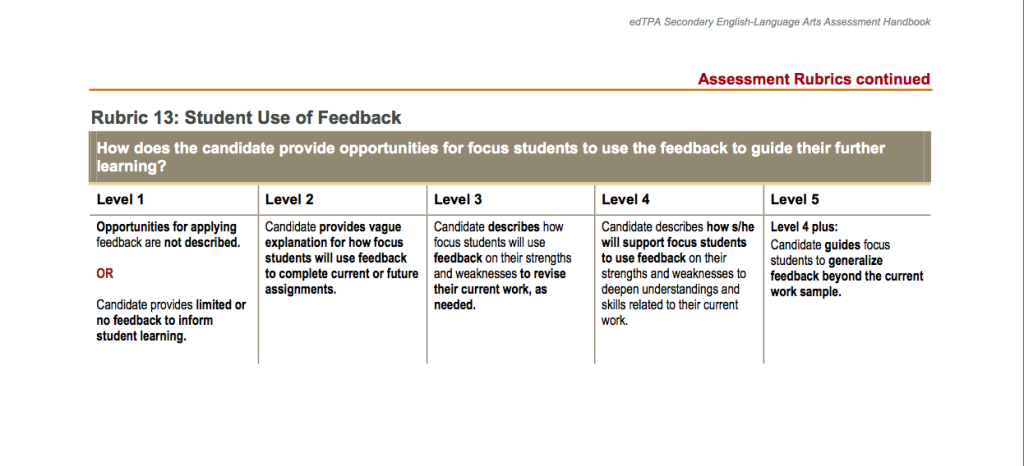Though it was a grueling battle, I have managed to slay the beast that is the edTPA. I am relieved to say that I passed, and I can now pass on my knowledge of the edTPA with full confidence. Briefly, for those unfamiliar, the edTPA is the Teacher Performance Assessment – a portfolio like compilation of reflections, lesson prep materials, video of lessons, artifacts from the classroom, and evidence of feedback to student work. The last point is what we have been focusing on in class, and the extensive feedback we have been providing is certainly something that fits well and would likely be scored well on the exam. For some more context, I’ll go through some basics of Task 3: Assessments, focusing on the feedback element and what the rubrics require.
It may go without saying, but first and foremost there must be an assessment that you, the teacher, assign with specific standards in mind and certain objectives for learning. The handbook specifically says the feedback is not just telling students what they have done wrong, but “Feedback to Guide Further Learning,” which is extremely important, and something I will come back to. Feedback submitted can submitted in one of three formats:
- Written directly on work samples or in a separate document
- In audio files
- In video clips from the instruction task or in a separate video clip
Additionally, you will provide commentary on the feedback you provided. The handbook asks you to: “Explain how feedback provided to the 3 focus students addresses their individual strengths and needs relative to the standards/objectives measured” (focus students are students you select to write about throughout Task 3 perhaps because they have a learning disability, because they are particularly successful, etc. The selection of these students is up to you). I think this part of the assessment is checking to make sure the prospective teacher isn’t giving the same generic answer to each student. The next part of this section asks how exactly will these students take the feedback given to them and apply it; which really means, how will you provide them opportunities to do so?
Just like the rest of the TPA, Task 3 is graded using rubrics that range in scores from 1 to 5. I’ve taken screenshots of the rubrics for this section. You can click the image to open it up in a new tab and read through the rubric.
Rubric 11: Analysis of Student Learning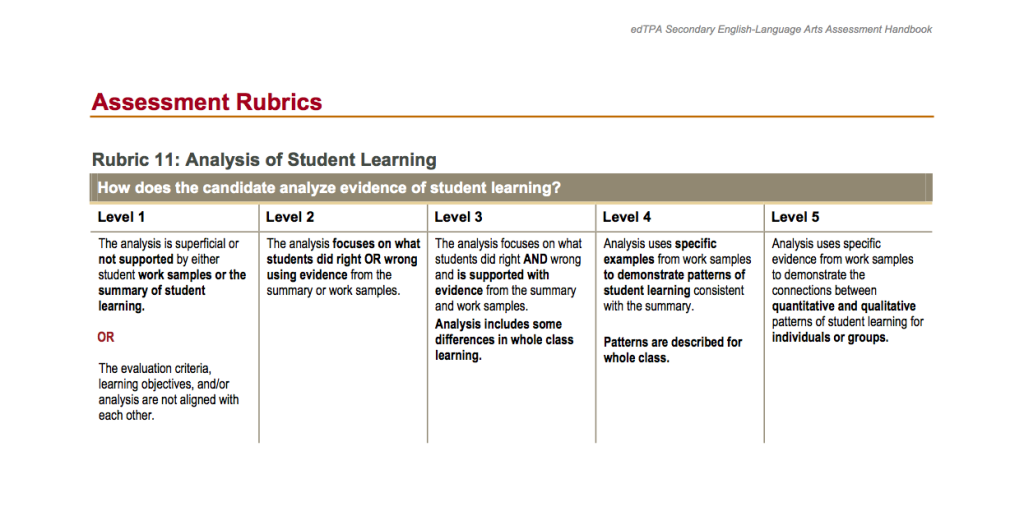
Rubric 12: Providing Feedback to Guide Learning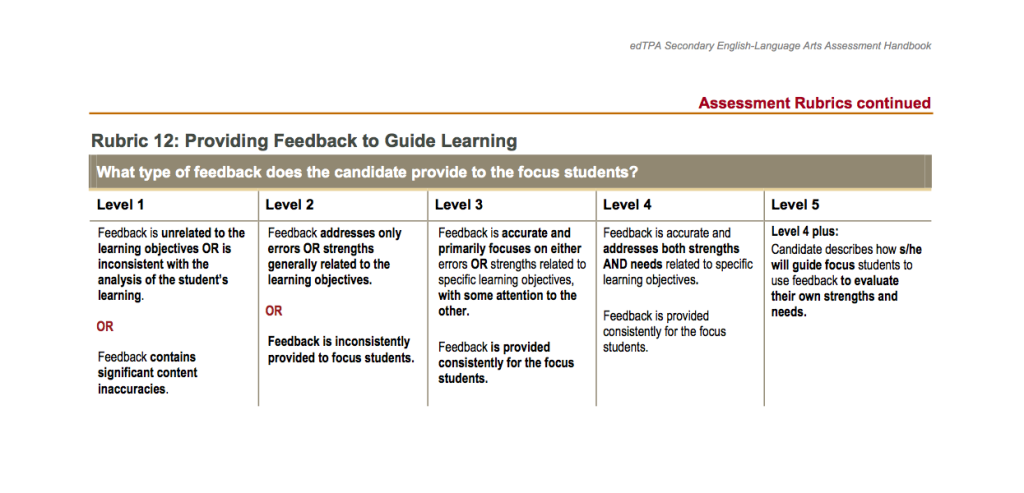
Rubric 13: Student Use of Feedback
Rubric 14: Analyzing Students’ Language Use and English-Language Arts Learning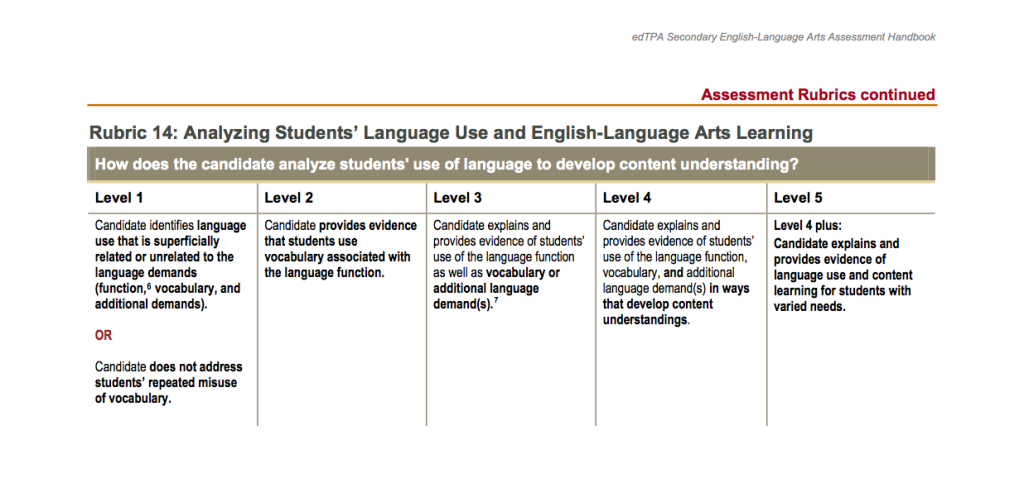 Rubric 15: Using Assessment to Inform Instruction
Rubric 15: Using Assessment to Inform Instruction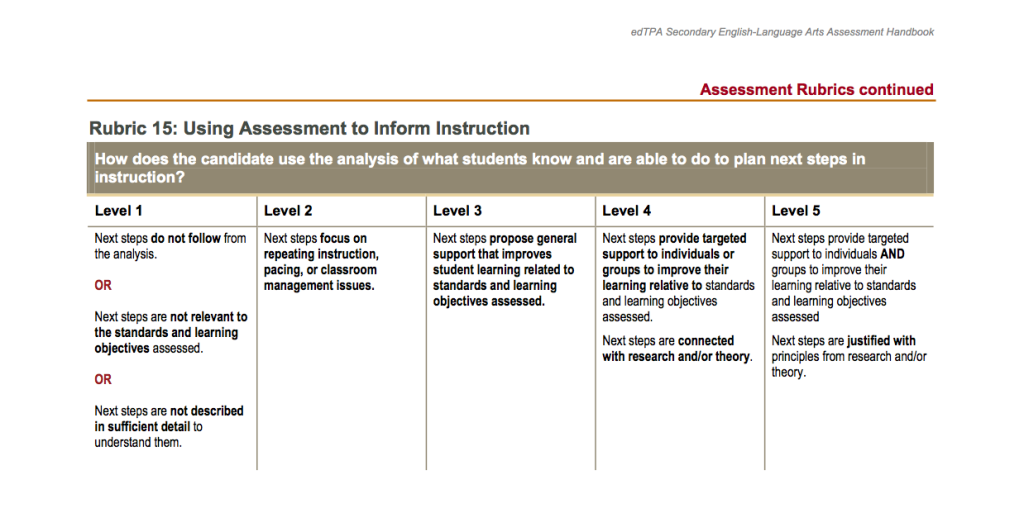
Now, of course, the idea here is to shoot to be graded as Level 5 for each section. From what I see, and what makes the most sense based on what the creators of this test stress in this section, in order to attain a grade of 5, the teacher candidate must show that he or she is providing means in whatever way necessary for students to take feedback that is specifically catered to them, and not only allow them to understand how the feedback can make the given assessment better, but also how the student can use the feedback can be used on future assessments.
It could be helpful for you to compare your feedback with these rubrics. Maybe this will help clear up some assessment questions, or maybe you’re perfect. Either way, you will have to tackle this assignment, so it can’t hurt to get familiar with it early!
